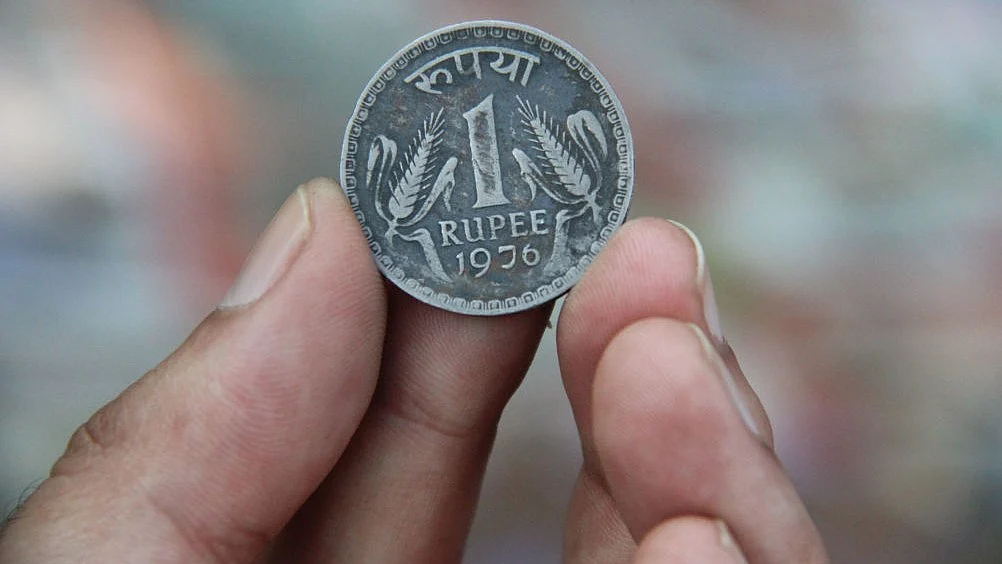Rupee drops 12% against US dollar since beginning of 2018; nears 74 per dollar
The rupee has turned out to be Asia’s worst-performing currency this year, dropping over 12% against the US dollar since the beginning of 2018, hitting a lifetime low of 73.77 to the dollar on Oct 4

The rupee has dropped over 12% against the US dollar since the beginning of 2018, earning it the unfortunate distinction of Asia's worst performing currency this year. On Thursday, October 4, PTI reported that the rupee had hit a new historic low of 73.77, plunging 43 paise against the US dollar. Economists blame rising global crude prices for the slide.
Key Indian equity market indices also opened lower on Thursday, amid fears over the Reserve Bank of India turning more hawkish in its monetary policy stance. The BSE Sensex, which had closed at 35,975.63 points on Wednesday, opened lower at 35,820.53 points. Minutes into trading, it was quoting at 35,603.53 points, down by 372.10 points, or 1.03%. At the National Stock Exchange, the broader 51-scrip Nifty, which had closed at 10,858.25 points on Wednesday, was quoting at 10,697.15 points, down by 161.10 points or 1.48%.
The macroeconomic problems resulting from a depreciating rupee are not Prime Minister Narendra Modi's only concerns. He is even more worried about growing public discontent due to the daily rise in petrol and diesel prices. With just seven months to go for the Lok Sabha elections, the Modi government can't afford to make itself the target of voter anger.
Voter memory is long. They may well recall the statements by supporters of Narendra Modi during the Lok Sabha election campaign in 2014, who made tall claims that under Modi, the rupee would be vastly strengthened. Art of Living Guru Sri Sri Ravi Shankar had said in March, 2014, in the middle of the Lok Sabha campaign, that “It is refreshing to know that the rupee will get stronger at ₹40 per dollar if Modi comes to power”.
In September 2013, yoga guru and entrepreneur Baba Ramdev had tweeted a “Chargesheet” on the then Congress-led UPA Government, saying “Chargesheet on Congress 1: dollar, pound and rupee was of the same value in 1947. Today 1$ = ₹67 and 1 Pound = ₹102.” Ramdev later threw his support behind Modi’s campaign.
In May 2012, politician Subramaniam Swamy, now a BJP Rajya Sabha MP, had said that in the year 2017, one rupee would be equal to one dollar.
Except for Subramaniam Swamy, Ramdev and Ravi Shankar are now maintaining a studied silence on the crashing rupee.
With economic development and job creation central to his campaign promises, Modi took office in May, 2014 proclaiming the onset of "Achhe Din" (good days). India’s economy, though, is seeing bad days. The banking sector is sighing under the weight of bad loans—or non performing assets—which are in the trillions of rupees, over 80% of these owed to state-owned banks. The NPA burden on banks has made them reluctant to lend, stalling private investment.
The agricultural sector is also under strain. Farmers are angry over issues like loan waiver, rising cost of production and dissatisfaction with government minimum support prices for major crops. Clashes broke out on Delhi's outskirts on October 2, Gandhi Jayanti, as police used water cannons and tear gas to stop thousands of protesting farmers from entering the capital. The farmers—reeling from high fuel costs— were demanding higher prices for agricultural goods, free electricity for farms and unconditional loan waiver.
About 45% of India's workforce is employed in agriculture. However, the sector accounts for just 15% of GDP. Excess and low-productivity farm labour could shift to well-paid jobs in industry and services, however, the economy is not generating enough opportunities for well-paid, decent jobs for the burgeoning youth population. Around 12 million people enter the workforce every year and the economy needs to create roughly one million jobs each month just to keep up with natural growth in the labour force. However, according to the government's own claims, which have been challenged by the Opposition parties, only 3.5 to 4 lakh jobs are created each month.
Narendra Modi needs to produce some of this magic he would do to strengthen the rupee that his supporters suggested to the people of India four years ago, else the rupee spiralling downward may take his fortunes along with it.
With IANS and DW inputs
Follow us on: Facebook, Twitter, Google News, Instagram
Join our official telegram channel (@nationalherald) and stay updated with the latest headlines
